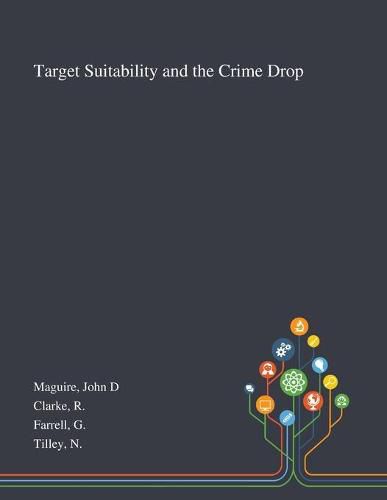Readings Newsletter
Become a Readings Member to make your shopping experience even easier.
Sign in or sign up for free!
You’re not far away from qualifying for FREE standard shipping within Australia
You’ve qualified for FREE standard shipping within Australia
The cart is loading…






This title is printed to order. This book may have been self-published. If so, we cannot guarantee the quality of the content. In the main most books will have gone through the editing process however some may not. We therefore suggest that you be aware of this before ordering this book. If in doubt check either the author or publisher’s details as we are unable to accept any returns unless they are faulty. Please contact us if you have any questions.
This is a chapter from The Criminal Act: The Role and Influence of Routine Activity Theory edited by Martin A. Andresen and Graham Farrell. This chapter is available open access under a CC BY license. Target suitability is a cornerstone of Marcus Felson’s routine activities approach, and critical in determining crime rates. Recent research identifies reduced target suitability, via improved security, as central to the ‘crime drop’ experienced in many countries. Studies in different countries show car theft fell with far more and better vehicle security. Yet increases in household security were more modest and do not track burglary’s decrease as well. In this chapter, the authors explain that apparent anomaly as due more to an improvement in the quality of household security leading to reduced burglary. It is further suggested that improvements to home insulation in the UK that brought double glazing may have, somewhat inadvertently, introduced better frames and locks for doors and windows, that in turn reduced household burglary.; This is a chapter from The Criminal Act: The Role and Influence of Routine Activity Theory edited by Martin A. Andresen and Graham Farrell. This chapter is available open access under a CC BY license. Target suitability is a cornerstone of Marcus Felson’s routine activities approach, and critical in determining crime rates. Recent research identifies reduced target suitability, via improved security, as central to the ‘crime drop’ experienced in many countries. Studies in different countries show car theft fell with far more and better vehicle security. Yet increases in household security were more modest and do not track burglary’s decrease as well. In this chapter, the authors explain that apparent anomaly as due more to an improvement in the quality of household security leading to reduced burglary. It is further suggested that improvements to home insulation in the UK that brought double glazing may have, somewhat inadvertently, introduced better frames and locks for doors and windows, that in turn reduced household burglary. This work was published by Saint Philip Street Press pursuant to a Creative Commons license permitting commercial use. All rights not granted by the work’s license are retained by the author or authors.
$9.00 standard shipping within Australia
FREE standard shipping within Australia for orders over $100.00
Express & International shipping calculated at checkout
This title is printed to order. This book may have been self-published. If so, we cannot guarantee the quality of the content. In the main most books will have gone through the editing process however some may not. We therefore suggest that you be aware of this before ordering this book. If in doubt check either the author or publisher’s details as we are unable to accept any returns unless they are faulty. Please contact us if you have any questions.
This is a chapter from The Criminal Act: The Role and Influence of Routine Activity Theory edited by Martin A. Andresen and Graham Farrell. This chapter is available open access under a CC BY license. Target suitability is a cornerstone of Marcus Felson’s routine activities approach, and critical in determining crime rates. Recent research identifies reduced target suitability, via improved security, as central to the ‘crime drop’ experienced in many countries. Studies in different countries show car theft fell with far more and better vehicle security. Yet increases in household security were more modest and do not track burglary’s decrease as well. In this chapter, the authors explain that apparent anomaly as due more to an improvement in the quality of household security leading to reduced burglary. It is further suggested that improvements to home insulation in the UK that brought double glazing may have, somewhat inadvertently, introduced better frames and locks for doors and windows, that in turn reduced household burglary.; This is a chapter from The Criminal Act: The Role and Influence of Routine Activity Theory edited by Martin A. Andresen and Graham Farrell. This chapter is available open access under a CC BY license. Target suitability is a cornerstone of Marcus Felson’s routine activities approach, and critical in determining crime rates. Recent research identifies reduced target suitability, via improved security, as central to the ‘crime drop’ experienced in many countries. Studies in different countries show car theft fell with far more and better vehicle security. Yet increases in household security were more modest and do not track burglary’s decrease as well. In this chapter, the authors explain that apparent anomaly as due more to an improvement in the quality of household security leading to reduced burglary. It is further suggested that improvements to home insulation in the UK that brought double glazing may have, somewhat inadvertently, introduced better frames and locks for doors and windows, that in turn reduced household burglary. This work was published by Saint Philip Street Press pursuant to a Creative Commons license permitting commercial use. All rights not granted by the work’s license are retained by the author or authors.